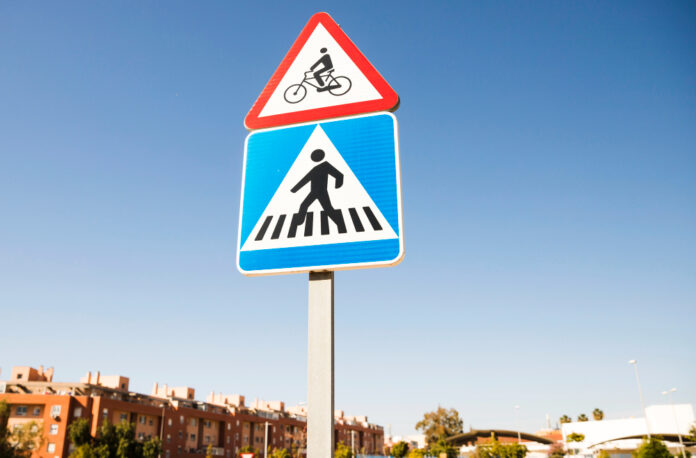Everyone who uses roads shares responsibility concerning road safety, whether walking, riding a bike, or driving a car. The roads in the UK can be crowded and unpredictable; accidents can happen at any moment. Road traffic accidents can have major, life-altering consequences so everyone should be mindful of their surroundings. These helpful tips will help walkers, bikers, and drivers stay safe on the road and minimise the risk of accidents.
But sometimes things get beyond our control, and we may find ourselves amidst an accident. You can call any competent personal injury solicitors in the UK who specialise in road traffic accident claims. It is good to seek out law firms working under a no-win no-fee policy. This ensures you only pay if you win the case.
With the help of such solicitors, your claims are sorted out in less time while ensuring you get the compensation you deserve.
For drivers and bikers
1. Pay attention to the speed limit
Speed limits exist for a reason—that is to protect and safeguard people who use roads. Following speed limits not only helps you avoid license penalties and points but also significantly reduces your risk of getting into a major accident. Always adjust your speed to fit the state and conditions of the road, such as rain, fog, or heavy traffic.
2. Don’t get distracted
Among the main causes of road traffic mishaps is distraction. Some common distractions include cell phones, in-car entertainment, and even eating while driving. Always keep your eyes on the road and if you must make a call or text, pull over safely first.
3. Always check for blind spots and use indicators
Two important habits that help avoid accidents are proper use of indicators and consistently checking blind spots. Make sure your route is clear and that your intentions are well expressed before turning or changing lanes.
4. Driving well-rested and sober
Driving under the influence of drugs, alcohol, or simply tiredness significantly decreases your reaction time and capacity for judgement. If you are by any chance feeling a bit drowsy or under the influence of intoxicants, either let someone else drive or delay your travel until you seem okay to drive.
6. Keeping a safe distance
Driving under the influence of drugs, alcohol, or simply tiredness significantly decreases your reaction time and capacity for judgement. If you are by any chance feeling a bit drowsy or under the influence of intoxicants, either let someone else drive or delay your travel until you seem okay to drive.
For cyclists: Tips on safe cycling
1. Always wear a helmet and high-visibility gear
Wearing helmets is essential to protect your head from injuries. For extra safety, make sure to wear bright and reflective accessories, especially in low-light weather, making you more visible to drivers and riders.
2. Use bike lanes and follow road rules
Cyclists must follow all the rules that a driver does. In addition to that, cyclists can use bike lanes whenever it is possible, preventing cycling in the wrong direction.
3. Give clear signals and make eye contact
The primary means of communication for cyclists are hand gestures. If you are about to turn or stop at an intersection, provide a clear signal and make eye contact with drivers to make sure they understand your signal and have seen you anticipate your next decision.
4. Staying alert and free of distractions
Listening to music or using your phone while cycling is extremely distracting and dangerous. You should always ride your bicycle with both hands on the handlebars and be extra vigilant in busy traffic areas.
5. Regular maintenance
Ensure you maintain your cycle regularly. Checking your brakes, tyre pressure and light is a step towards safety. Before you are about to set off, make sure to check your cycle one time to avoid mechanical failures and accidents.
For Pedestrians: Tips for navigating the roads safely
1. Using crosswalks and following traffic signals
To walk safely across streets, use zebra crossing always, and also make sure to look out for pedestrian traffic symbols. Before crossing, always look out for approaching vehicles.
2. Always walk on pavements
Keep on the pavement and walk facing traffic in areas that have no pavements. By walking on the pavements, you keep a reasonable distance from cars. Walking facing traffic lets the ongoing traffic know that you are approaching so they become careful.
3. Avoid listening to headphones or using phones while crossing roads
Don’t use any phones or listen to music while crossing. Using such things may create a distraction and become dangerous, leading you to an accident.
4. Eye contact
Always ensure that the driver spots you and intends to stop before you cross the road. This little act can help avoid mistakes and misinterpretations.
Understanding our rights following an accident
Whether you drive, ride a bike, or walk, following precautions and being alert will greatly lower the likelihood of road traffic accidents.
Still, accidents happen even with our best efforts to avoid them. Should you have been involved in an accident, it’s crucial to know your rights and obligations. Contact any expert personal injury solicitors for guidance on how to proceed with your claim, including the no-win no-fee policy. A competent lawyer can assist you in navigating the legal system and enable you to get fair compensation.
